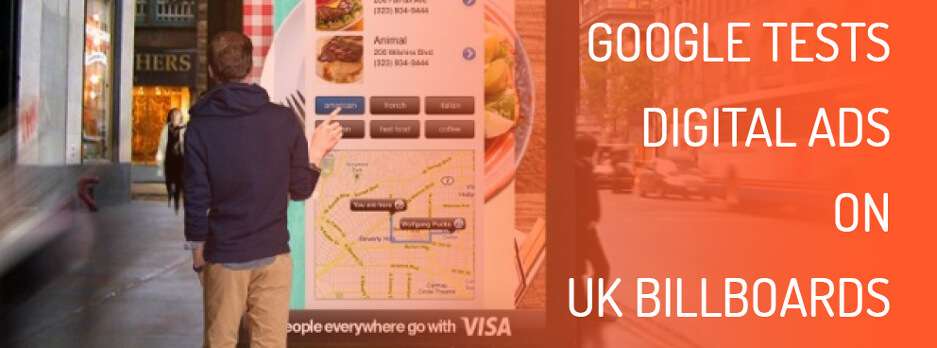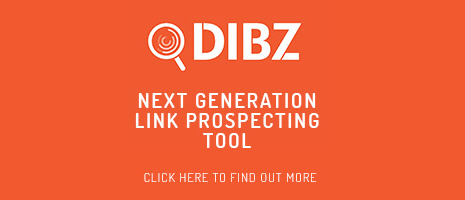Google Tests Digital Ads on UK Billboards: Who will Benefit Most?

Eager to escape the apparently all too narrow confines of the screens of our smartphones, smartwatches, desktops, laptops and tablets, Google recently started dipping their toes into the waters of digital out-of-home (DOOH) advertising.
The goal behind the project is to expand the use of Google’s DoubleClick functionality and enable people to programmatically order billboard ads. Of course, given that advertising represents the primary source of profit for the company, such a step should come as no surprise. In fact, it could be said that not even the potential for astronomic increase in revenue coming from a previously entirely untapped medium exhilarates them as much as the fact that they’ve finally found a way to beat AdBlock.
Google, Google everywhere!
Google’s smart billboards began running the ads in early October, using prime advertising locations in London as their testing ground. While they are not the first to try something like this, DoubleClick and the rest of Google’s infrastructure devoted to understanding contextual clues and responding to them provides the means to make the most of this medium. This means they are only to keep creeping us out with their unnerving knowledge of our interests even in the false security of a previously offline world.
The idea is to use real time and historical signals in deciding which ad to display at what time in order to maximize their effectiveness. So, for instance, if it’s raining heavily, you might get an umbrella, Coke or a tropical retreat ad served; if there’s a game nearby, you might get ticket company or Coke ads; if there was a car crash in the vicinity you might be presented with a mechanic, life insurance or Coke reminder and so on. Ideally, this should reduce wastage, which is all too common with typical billboard advertising, and really, really make you want a Coke.
What’s in it for advertisers actually?
While Google sometimes does seem to be eager to commit to a project or an idea simply because of its novelty, their ads department, the one shareholders are probably most fond of, is unlikely to make a move without doing their homework first and having a much more tangible reason than simply breaking new ground. According to eMarketer, DOOH advertising has been gaining traction for a while now. In 2014, it accounted for 38.1% of total out-of-home ad spending in the United States, with the figure rising to 40.8% in 2015, and being projected to reach 53% in 2018.
Furthermore, as pointed out in Forbes, another strong incentive for moving their ads closer to the real world is found in the fact that DOOH advertising should be safe from one the major concerns associated with online and mobile advertising – digital fraud. This should make the advertisers more comfortable with the security of their investment, while the familiarity with the medium is likely to help the audience perceive brands populating these ads somewhat more trustworthy and credible than the ones that can more commonly be seen online.
Potential complexities
Finally, the link between digital and mobile advertising on one side and out-of-home advertising on the other, while not as easily solidified as people might think, is one that Google can’t ignore especially with the running start that DoubleClick provides them. As mobile solutions lead for Google’s DoubleClick, Google’s Tim Collier points out, one of the goals of this test is to try and examine the issues that are likely to be encountered in the marrying of these related but still different disciplines.
“There is a common misconception that the merging of these two industries is straightforward. This test has highlighted a number of areas that are fundamentally different and which will require further development and integration before this becomes a market reality,” notes Collier.
Among other expected complications, he mentions reporting, audience data tracking, and yield management. However, while there are expected issues, there are also areas of symbiotic compatibility. For instance, COG Research, commissioned by Outdoor Media Centre in 2014 concludes that people are 28% more likely to take an action like buying something or looking it up when presented with an outdoor ad then they are when the same message comes through other media. The same research also indicates that 7 in 10 people in the street are in active purchase mode.
Evidently, the whole concept of digital out-of-home technology is deeply rooted in consumers’ psychology and as such promises excellent results. In relation to the research findings, CEO at Outdoor Media Centre suggests that this can benefit advertisers by allowing them to target consumers at the times they’re most likely to properly experience the ad:
“Contextual planning is a real benefit of the outdoor medium, and now we know they our audience is one third more attentive.”
Conclusions
While reporting and analyzing the audience data might be a bit different than Google is used to, their existing infrastructure will still enable them to get some interesting info. For instance, people are already starting to worry what kind of liberties they will be taking with our privacy in order to choose which ads to display or to track their performance. Still, the fact is that even without any kind of special permission from the audience or intrusive access to their devices, Google can learn a lot about the influence that the ads are having.
Keeping an eye on the searches made in the area where the billboard is displayed should already tell them a great deal, and they don’t need any kind of authorization to do that.


 SEARCH
SEARCH

